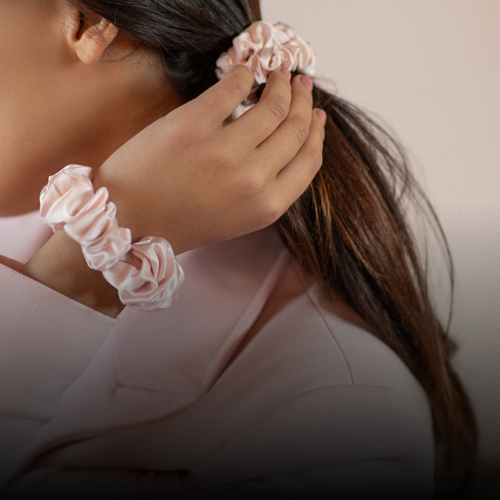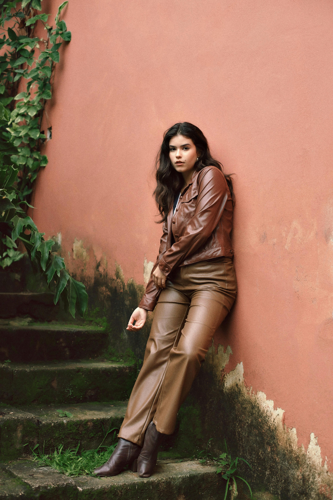
At the end of the day, people sometimes want to feel glamorous, show off their opulence, or dress up to celebrate pivotal moments in their lives. One of the central elements that makes an outfit pop is the fabrics that compose it. The lust to feel like modern-day royalty has fueled an ever-expanding industry in which companies seek out ever-newer materials that can provide the ultimate in extravagance, comfort, and class. In this article, we will be going through the most luxurious fabrics used today to satiate that consumer demand.
What makes a fabric luxurious?
There is a range of delightful qualities extravagant materials harbor that set them apart from the run-of-the-mill, generic, inexpensive items accessible to anyone.
Here are some qualities that make fabrics luxurious:
Human touch & craftsmanship: machines may be able to operate at a high speed, but they do not provide the attention to detail that human beings do. Workers are able to add a level of detail that renders them more comfortable and better adorned. This renders them unique among the other garments in the batch too, whether it’s a flowing gown, a structured suit, or a delicate scarf.
Sheen and luster: many glamorous fabrics possess a natural glossy finish that enhances their visual appeal. By catching light the way they do, they retain an ethereal radiance and sophistication.
Durability: delicate as they are, many luxurious fabrics still last longer than garments made for mass consumption. They often can be enjoyed for years, growing more beautiful over time. Naturally, people want to hold onto their purchases for longer.
Exclusivity and rarity: people know these are often hard to find or produce, rendering them all the more alluring. There are limited quantities of them to buy and this only adds to their prestige.
Popular luxury fabrics
These are the most sought-after types of materials in the world. We will dive into how they are made, the difficulties in producing and acquiring them, and what makes them so special.
Wool
Though a moderately priced fabric under ordinary circumstances, there are certain variations of it that people would kill for. It all depends on the breed of the sheep and how the wool is processed. Merino, alpaca, and cashmere are particularly soft, warm, and last a very long time. Baby cashmere is one of the most expensive fabrics in the world, sourced from Mongolia and China.
Leather

Derived from animal hides such as cows, lambs, alligators, and even stingrays, this material is one of the most durable types. It undergoes a tanning process that preserves and softens the skin and plays a crucial role in determining the quality and texture of the final product. Full-grain leather, which retains the outermost layer of the hide, is considered the highest quality.
Suede
This is a type of leather with a velvety-soft surface, usually made from the underside of animal hides, especially lambskin. Unlike full-grain leather, suede is sanded and buffed to achieve its signature softness and flexibility. People enjoy its smooth texture and rich, matte finish, though it’s not as sturdy as other leather.
Lace
This is a delicate, open-weave fabric traditionally made from silk and linen, though modern versions also incorporate cotton and synthetic fibers. Its intricate patterns are created through elaborate techniques such as needle, bobbin, and chemical lace. High-quality lace requires meticulous human touch, often taking weeks or months to complete a single piece.
Silk
This is one of the most iconic luxury fabrics, prized for its natural sheen, softness, and incredible strength. It comes from the silkworm, which spins a cocoon of silk fibers, which are then unraveled and spun into silk threads, a process that has been perfected over centuries, primarily in India and China. Its exclusivity stems from its labor-intensive production.
Georgette
This crepe fabric is known for its lightweight sheer quality and slightly rough texture. It’s traditionally made from pure silk, though some modern versions incorporate synthetic fibers like rayon and polyester. It has twisted yarns with give it a distinctive crinkled effect and effortless drape.
Satin
This material is known for its shininess and smooth texture. It was originally made from silk like lace and georgette. Its key feature is its unique weave, where the fibers are floated over multiple threads before being interlaced, creating its signature glossy finish on one side and dull surface on the other.
Velvet
The name itself seems synonymous with luxury with its plush, soft texture. It nowadays is often created in combination with rayon, polyester, and cotton. The velvety surface is achieved by two layers of fabric being woven together and then cut apart. This results in a dense pile. It’s historically been associated with royalty and nobility.
Chiffon
This is a lightweight, sheer fabric created out of natural and synthetic fibers alike. The most luxurious version of it has traditionally been crafted using silk, accounting for its delicateness and airiness. It’s created by tightly twisting the yarns in a balanced plain weave, giving it its slight roughness and beautiful drape. It’s commonly used in high-end evening gowns, scarves, and bridal wear.
Damask
Damask is an intricate, reversible fabric featuring elaborate patterns woven directly into the textile as opposed to being printed or embroidered. It is created using a jacquard loom where the contrast between the satin and plain weave produces striking designs. The most opulent variations of it are the ones made using silk and it’s used in home furnishings, upholstery, and couture fashion. It’s historically been associated with nobility, as weaving its patterns takes skill.
Mohair
This is acquired normally in South Africa and Turkey from the Angora goat. The fibers are grazed off the animal and then processed for cleaning before it’s spun into yarn. The resulting material is silky, sturdy, and great for keeping people warm. For that reason, it’s used in suits, coats, and fine knitwear.
Organza

Here we have a light, sheer, crisp fabric traditionally woven from silk. It originates from China and is produced often in regions like Italy and India. It’s produced in a tight, plain weave with fine threads that create its distinctive transparency and stiffness. High-quality silk organza is used in evening gowns, wedding dresses, and as overlays for luxurious garments.
Chenille
French for “caterpillar”, the material is known for its soft, fuzzy texture. It’s created by weaving short lengths of fabric between two core yarns and then cutting and fluffing the fibers to achieve its recognizable plush feel. It’s highly prized for upholstery, home decor, and high-end fashion.
Crepe
This is distinguished by a crinkled, textured appearance achieved through a special weaving or chemical treatment process. It’s created by twisting fibers before weaving which results in the puckered look it’s known for. It’s versatile and commonly used in designer clothing.
Toile
Short for “toile de Jouy”, this is a printed fabric with intricate pastoral designs usually in a single color against a light background. It was developed in France in the 18th century and is still associated with historical elegance. Its elaborate artistic prints often depict scenic landscapes, floral motifs, and romanticized countryside scenes.






(0) comments
We welcome your comments
Log In
Post a comment as Guest
Keep it Clean. Please avoid obscene, vulgar, lewd, racist or sexually-oriented language.
PLEASE TURN OFF YOUR CAPS LOCK.
Don't Threaten. Threats of harming another person will not be tolerated.
Be Truthful. Don't knowingly lie about anyone or anything.
Be Nice. No racism, sexism or any sort of -ism that is degrading to another person.
Be Proactive. Use the 'Report' link on each comment to let us know of abusive posts.
Share with Us. We'd love to hear eyewitness accounts, the history behind an article.